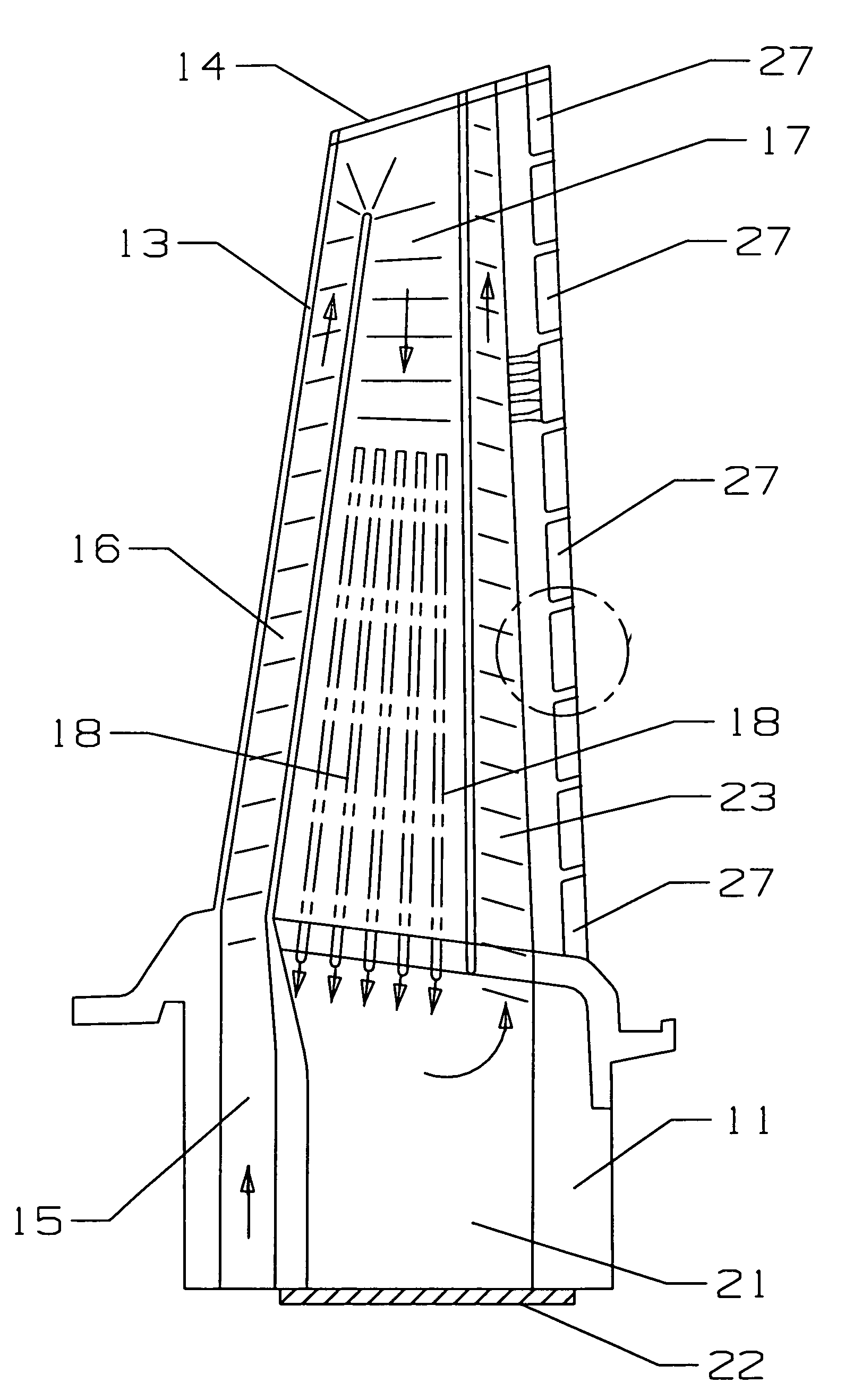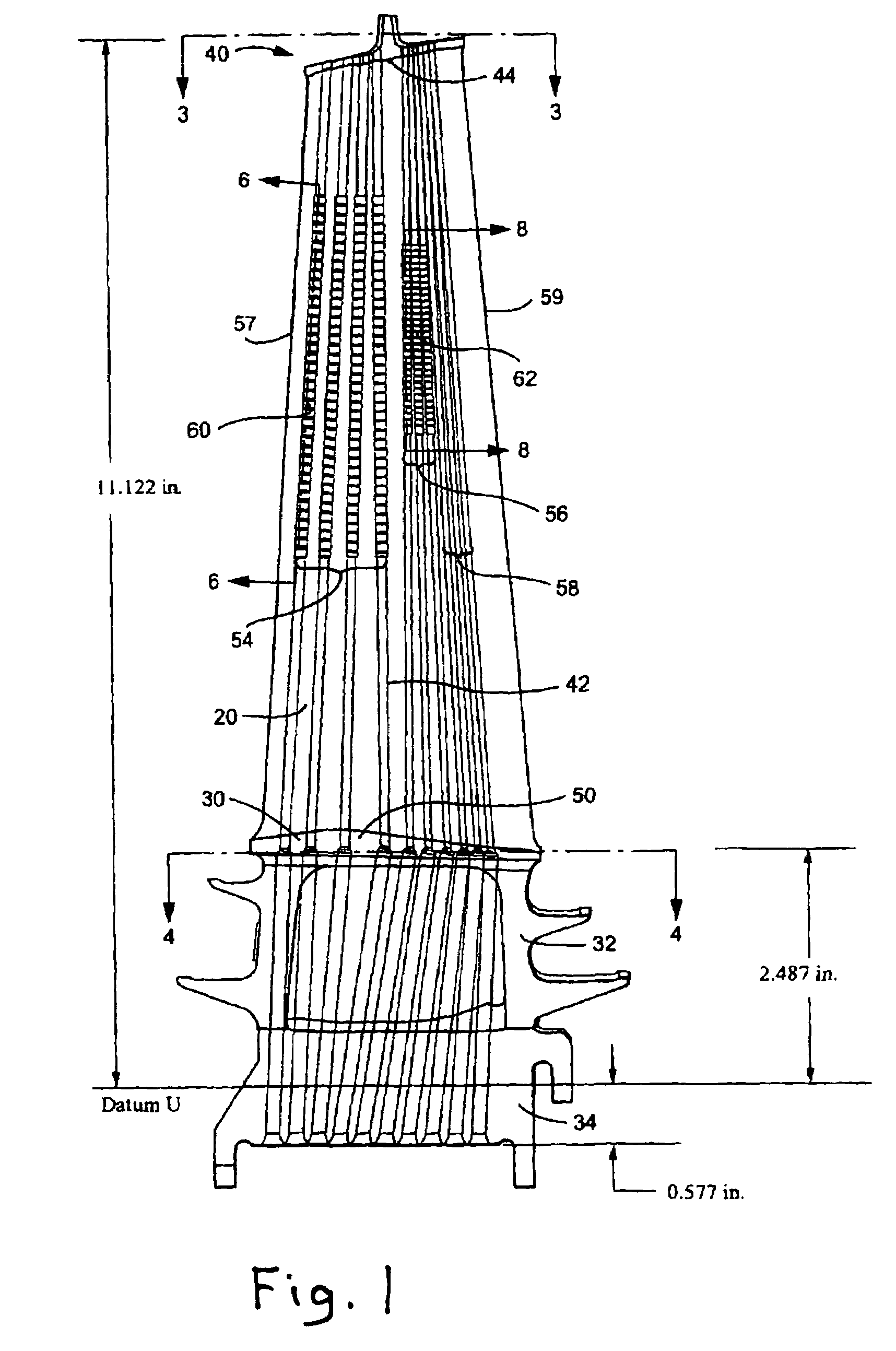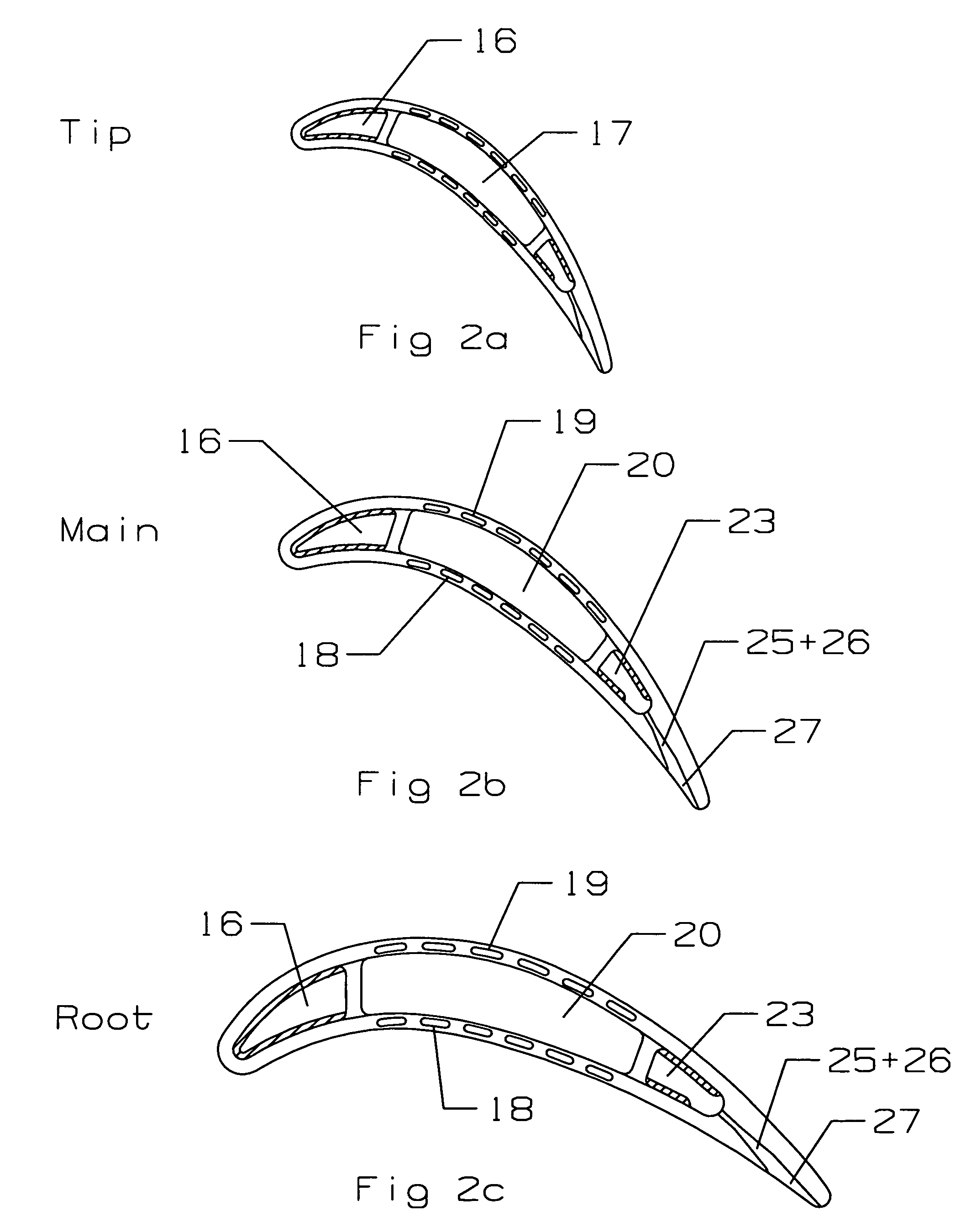Large tapered rotor blade with near wall cooling
a cooling circuit and rotor blade technology, applied in the field of fluid reaction surfaces, can solve problems such as reducing casting yields, and achieve the effects of reducing cooling flow cross sectional area, reducing cooling through velocity, and lightening blades
- Summary
- Abstract
- Description
- Claims
- Application Information
AI Technical Summary
Benefits of technology
Problems solved by technology
Method used
Image
Examples
Embodiment Construction
[0025]The present invention is for a large turbine rotor blade used in a gas turbine engine in which the blade includes a large amount of taper and twist that makes it difficult if not impossible to form radial cooling channels from the root to the tip. However, the cooling circuit could be used in not so large rotor blades or stator vanes without departing from the spirit and scope of the invention.
[0026]FIG. 3 is a best representation of the serpentine flow cooling circuit in the turbine blade of the present invention. The blade includes a root portion 11, an airfoil portion 13, and a tip portion 14. A cooling air supply passage 15 is in the root portion 11 and leads into a first leg of the 3-pass serpentine flow cooling circuit. The first leg is a leading edge cooling channel 16 that extends from the root supply channel 15 to the blade tip 14 and turns into the second leg 17 at the tip 14. Trip strips are included within the leading edge channel 16 to promote turbulence within th...
PUM
 Login to View More
Login to View More Abstract
Description
Claims
Application Information
 Login to View More
Login to View More - R&D
- Intellectual Property
- Life Sciences
- Materials
- Tech Scout
- Unparalleled Data Quality
- Higher Quality Content
- 60% Fewer Hallucinations
Browse by: Latest US Patents, China's latest patents, Technical Efficacy Thesaurus, Application Domain, Technology Topic, Popular Technical Reports.
© 2025 PatSnap. All rights reserved.Legal|Privacy policy|Modern Slavery Act Transparency Statement|Sitemap|About US| Contact US: help@patsnap.com



